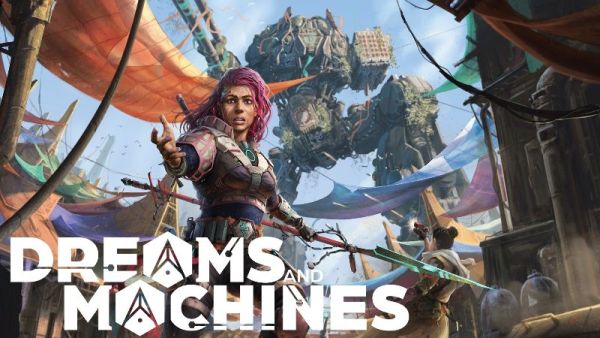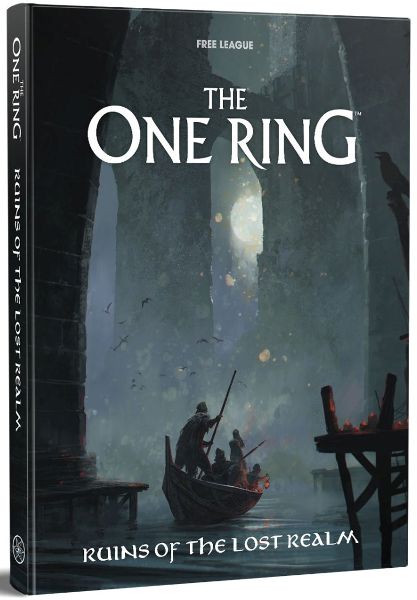
Stay on Target
By The Warden
PREVIOUSLY: In my quest to build a new system from scratch (and meticulously document it right here), I’ve devised a plan for a fast-paced, easy-to-learn system currently titled “Phoenix Project” where odd numbers on the dice can spell trouble. Last week, I decided to allow players to active defend/oppose any actions taken against their characters and maintain a constant state of play throughout the game. However, it does lead us to the next step in Phoenix’s genesis: target numbers. If you’re new to this process and find any of it interesting enough to make a lunch break of backtracking, check out everything under the Phoenix Project tag.

What I’m about to talk about is breaking a cardinal rule of game design, at least from a personal standpoint. Since choosing to allow players to actively oppose rolls made against them, I’ve been wondering about keeping that practice alive throughout gameplay and skip over static target numbers altogether. Instead, the GM would be able to roll against any action. Just why in the Abyss would I do such a thing? Because of unity.
I’m not fond of exceptions in game design and it’s really constant. Seems like every game is built with static target numbers, but you can roll to detect that crafty thief trying to sneak past you. This one in particular is a very common application in many games and it makes perfect sense, regardless of why it came about. Whatever that reason may be, it’s still an exception from the core rules explained at the beginning of the chapter and I tend to look at it as lazy design. Add to that the fact that I’m trying to keep Phoenix as simple as possible and it seems clear that mixing target numbers with opposed rolls muddies up the water a bit.
Seems like the decision is made then, right? No, not even close because there is something else to consider in this design and that’s speed. If I’m going to have every roll opposed by another player – including the GM – doesn’t that run the risk of slowing down the game every so much? It may only be measured in seconds, but those seconds do add up and it is something I have to seriously consider. The question now comes down to deciding which is more important: my own stubbornness or the integrity of the design.
That’s why I’m going to go into detail about the pros and cons of using target numbers in RPGs as a means of helping myself come to a decision.
WOULD YOU LIKE YOUR TARGET NUMBERS LOCKED OR RANKED?
Target numbers exist across the board when you apply dice to the equation and they work in one of two ways: locked or ranked. (These are not industry terms of any kind, just the ones I use for my own sake and they seem appropriate enough to do what needs doing here.) Locked target numbers remain the same no matter what or how many dice you’re rolling and exist in games such as Savage Worlds (if you roll a 4 or higher, you’re successful), World of Darkness (each die rolling 8 or higher is a success) and Apocalypse/Dungeon World (roll a 7-9 and it’ll succeed with some problems or roll a 10+ and it goes off without a hitch). These are systems where everyone knows the result as soon as those dice stop bouncing, even if the GM has turned around to file through the rulebook for a moment. Technically speaking, the original editions of D&D and many other clones have locked target numbers with ability scores (having to roll equal to or higher than a given ability score) because you know exactly what you have to roll regardless of play style.
Ranked target numbers usually present themselves as difficulty numbers ranging from easy to damn near impossible and the goal is usually to roll equal to or higher than the target number. These systems can work in two ways in how GMs should set those targets; one being a generic level of interpretation where there are 4-6 target levels assigned a fixed number (i.e. Easy difficulty requires a 6 or more, Medium needs 9+, Hard is 12 and up, etc.) and the other where detailed, complex rules are provided for every pre-imagined situation (and yes, I’m peaking at the Pathfinder bible stacked on my desk).
Each version basically works the same during gameplay and the onus remains on the player/character to overcome these target number using bonuses, unique abilities, and lucky rolls (hey, let’s face it) to achieve victory on this dark day. Of both possibilities mentioned here, I’m inclined to go with a basic ranked target number as it feels a better, co-operative choice to work alongside opposed rolls. Players offer up descriptions of how badass their character’s action shall be and the GM ponies up a target number based on how tricky she thinks it would be for a normal character to accomplish. Don’t forget, these characters will have higher than average dice to draw from and will have a greater chance of rolling higher than the target number. I thought about basing target numbers on the challenge for the attempting character, but that defeats the purpose of allowing for higher Potential and bigger dice.
The more I consider this as an option, the more I think it is a safer fit to keep gameplay going, but I’m still troubled by allowing an exception to what was supposed to be a standard practise in this game: opposed rolls. There has to be something that makes the exception worthy of insertion and I’m not quite sold yet. Perhaps if we consider what the default, more common target number should be?
DRAWING A LINE IN THE SAND
That means we need to set a basic level of difficulty for the average, Joe Blow person in whatever world these characters call home. Based on the heights of power and awesomeness I’d like to see from these characters, I’m going to set the average nobody’s Potential at d6. Standard roleplaying design says the average character should have a 51% chance of success, a literal pass/fail opportunity. That means the average target number (let’s call it Medium Difficulty) should be 4 and seeing as dice sizes increase in increments of two, Hard Difficulty should by 6, then the next level should be 8, then 10, and so on. Which also means Easy Difficulty is a 2 and anything less is a given, no roll required.
Don’t believe me about the 51%? Check out the examples given above. Savage Worlds assumes a d6 for the average character and the target is 4; Apocalypse/Dungeon World says you fail if you roll a 6 or lower on a d12; and D&D/Pathfinder‘s average Difficulty Class is 10 when everyone rolls a d20 to determine success. Granted, my World of Darkness example doesn’t even come close on the surface but I’m assuming the math assumes the odds of being able to roll at least one 8 or more on your average pool of dice comes close to pulling it off at least 51% of the time. If not, my apologies, but my experience tells me your standard success fault line should be halfway plus 1%.
Keeping these ranked target numbers at even digits also works with the characters and allows me to hold onto one of this system’s core aspects, the odd vs even spread. A character can succeed with an even number exactly as they desire and common logic says the number should be even to provide for that success. Because setting target numbers as odd numbers would indicate any character rolling the exact target number barely succeeded and could provide a little intensity into the scene.
Hmm…
Change of plans. I want to see Medium Difficulty at 3 and increase every additional level at +2 to create this very effect. The more I think about how Complications can work in this system, the more I want to give it every opportunity to shine and this feels like a perfect fit for that purpose.
THEN AGAIN…
Is it necessarily easier to use ranked target numbers than to allow the GM to make opposed rolls for inanimate objects and physics? In a way, yes, because it all stems down to Complications. If a character wants to hot wire a car, should the car possibly suffer from a Complication and how feasible is it to provide enough rules and/or provisions within the core text of the game so Gamemasters feel confident enough to handle them when the time comes? For this reason alone, I think having the GM deal with them non-stop in response to three or more players/characters’ choices, actions, and outcomes can end up being a bit much. For now, at least, I’m thinking the only feasible way to pull it off is by providing an exception to the existing rules and if I’m going to make a small exception, why not just go ahead and avoid the problem altogether.
What do you think? Ranked target numbers or opposed rolls across the board? Or is there another possibility I haven’t considered?


